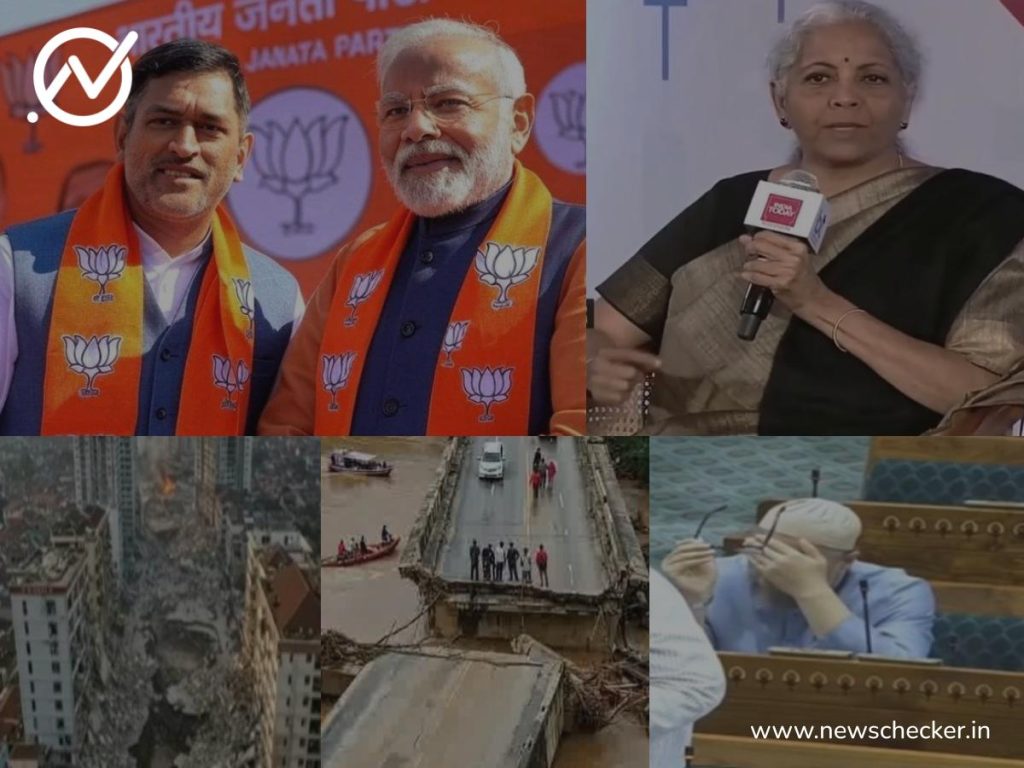The Rise of Misinformation: Debunking False Narratives in the Digital Age
In an era dominated by the rapid dissemination of information through social media and online platforms, the spread of misinformation has become a growing concern. False narratives, often fueled by political agendas or malicious intent, can quickly gain traction and manipulate public perception. This week, several instances of fabricated news and manipulated media highlighted the importance of fact-checking and media literacy in navigating the digital landscape. From communal tensions to political maneuvering, the spread of misinformation has touched upon various aspects of public life, underscoring the need for heightened vigilance and critical evaluation of online content.
False Claims and Communal Tensions: The Malda Violence Narrative
Following violent clashes in Malda’s Mothabari ahead of Eid, allegations of targeted arrests based on religious affiliation surfaced online. Posts claiming that only Hindus were arrested by the West Bengal police spread rapidly, further inflaming communal tensions. Fact-checking, however, revealed these claims to be false, demonstrating how misinformation can be weaponized to exacerbate existing social divides. The incident underscores the crucial role of responsible reporting and verification in preventing further escalation of conflict.
Political Manipulation and Deepfakes: Dhoni’s BJP Allegiance and Sitharaman’s Investment Endorsement
The political landscape has become increasingly susceptible to manipulation through fabricated content. A viral image purportedly showing cricketer MS Dhoni with Prime Minister Narendra Modi, suggesting his affiliation with the BJP, turned out to be AI-generated. Similarly, a deepfake video featuring Finance Minister Nirmala Sitharaman endorsing a dubious investment platform circulated widely, highlighting the increasing sophistication of fabricated media. These instances raise concerns about the potential for deepfakes and manipulated content to influence public opinion and undermine trust in political figures and institutions.
Exploiting Emotions and Distorting Reality: Owaisi’s Tears and the Myanmar Earthquake
Misinformation campaigns often exploit emotional vulnerabilities to amplify their impact. A video falsely claiming to show AIMIM Chief Asaduddin Owaisi crying in Parliament over the Waqf Amendment Bill circulated widely, preying on viewers’ sentiments. In another instance, an AI-generated video depicting widespread devastation caused by the earthquake in Myanmar was shared online, exploiting the tragedy to gain views and engagement. These incidents highlight the ethical considerations surrounding misinformation and the need to be cautious of emotionally charged content.
The Need for Critical Evaluation and Media Literacy
The rise of misinformation underscores the urgent need for enhanced media literacy among individuals. Developing critical thinking skills and the ability to identify fabricated content is crucial in navigating the digital landscape. Fact-checking organizations play a vital role in debunking false narratives and providing accurate information, but individual responsibility is equally important. Questioning the source, verifying information through multiple sources, and being wary of emotionally charged or sensationalized content are essential steps in combating the spread of misinformation.
Protecting Democracy and Fostering Informed Citizenship
The fight against misinformation is a collective effort involving individuals, media organizations, tech companies, and government agencies. Promoting media literacy initiatives, fostering critical thinking skills, and developing technological solutions to detect and counter fabricated content are essential steps in addressing this challenge. Protecting the integrity of information is crucial for safeguarding democratic processes, fostering informed citizenship, and ensuring a healthy public discourse based on facts and evidence. The examples highlighted this week serve as a stark reminder of the pervasiveness of misinformation and the importance of vigilance in the digital age.


